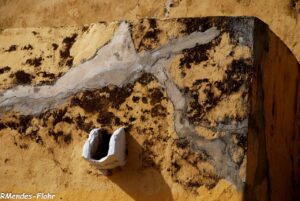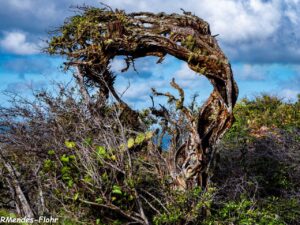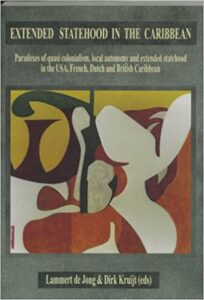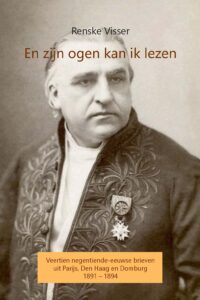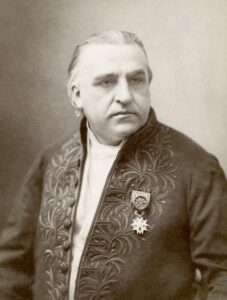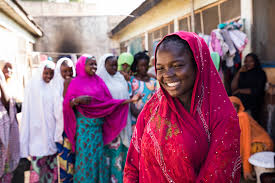Why Artificial Intelligence Must Be Stopped Now
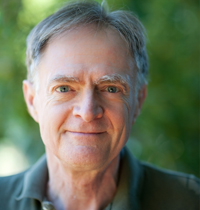
Richard Heinberg
03-21-204 ~ The promise of AI is eclipsed by its perils, which include our own annihilation.
Those advocating for artificial intelligence tout the huge benefits of using this technology. For instance, an article in CNN points out how AI is helping Princeton scientists solve “a key problem” with fusion energy. AI that can translate text to audio and audio to text is making information more accessible. Many digital tasks can be done faster using this technology.
However, any advantages that AI may promise are eclipsed by the cataclysmic dangers of this controversial new technology. Humanity has a narrow chance to stop a technological revolution whose unintended negative consequences will vastly outweigh any short-term benefits.
In the early 20th century, people (notably in the United States) could conceivably have stopped the proliferation of automobiles by focusing on improving public transit, thereby saving enormous amounts of energy, avoiding billions of tons of greenhouse gas emissions, and preventing the loss of more than 40,000 lives in car accidents each year in the U.S. alone. But we didn’t do that.
In the mid-century, we might have been able to stave off the development of the atomic bomb and averted the apocalyptic dangers we now find ourselves in. We missed that opportunity, too. (New nukes are still being designed and built.)
In the late 20th century, regulations guided by the precautionary principle could have prevented the spread of toxic chemicals that now poison the entire planet. We failed in that instance as well.
Now we have one more chance.
With AI, humanity is outsourcing its executive control of nearly every key sector —finance, warfare, medicine, and agriculture—to algorithms with no moral capacity.
If you are wondering what could go wrong, the answer is plenty.
If it still exists, the window of opportunity for stopping AI will soon close. AI is being commercialized faster than other major technologies. Indeed, speed is its essence: It self-evolves through machine learning, with each iteration far outdistancing Moore’s Law.
And because AI is being used to accelerate all things that have major impacts on the planet (manufacturing, transport, communication, and resource extraction), it is not only an uber-threat to the survival of humanity but also to all life on Earth.
AI Dangers Are Cascading
In June 2023, I wrote an article outlining some of AI’s dangers. Now, that article is quaintly outdated. In just a brief period, AI has revealed more dangerous implications than many of us could have imagined.
In an article titled “DNAI—The Artificial Intelligence/Artificial Life Convergence,” Jim Thomas reports on the prospects for “extreme genetic engineering” provided by AI. If artificial intelligence is good at generating text and images, it is also super-competent at reading and rearranging the letters of the genetic alphabet. Already, AI tech giant Nvidia has developed what Thomas calls “a first-pass ChatGPT for virus and microbe design,” and applications for its use are being found throughout life sciences, including medicine, agriculture, and the development of bioweapons.
How would biosafety precautions for new synthetic organisms work, considering that the entire design system creating them is inscrutable? How can we adequately defend ourselves against the dangers of thousands of new AI-generated proteins when we are already doing an abysmal job of assessing the dangers of new chemicals?
Research is advancing at warp speed, but oversight and regulation are moving at a snail’s pace.
Threats to the financial system from AI are just beginning to be understood. In December 2023, the U.S. Financial Stability Oversight Council (FSOC), composed of leading regulators across the government, classified AI as an “emerging vulnerability.”
Because AI acts as a “black box” that hides its internal operations, banks using it could find it harder “to assess the system’s conceptual soundness.” According to a CNN article, the FSOC regulators pointed out that AI “could produce and possibly mask biased or inaccurate results, [raising] worries about fair lending and other consumer protection issues.” Could AI-driven stocks and bonds trading tank securities markets? We may not have to wait long to find out. Securities and Exchange Commission Chair Gary Gensler, in May 2023, spoke “about AI’s potential to induce a [financial] crisis,” according to a U.S. News article, calling it “a potential systemic risk.”
Meanwhile, ChatGPT recently spent the better part of a day spewing bizarre nonsense in response to users’ questions and often has “hallucinations,” which is when the system “starts to make up stuff—stuff that is not [in line] with reality,” said Jevin West, a professor at the University of Washington, according to a CNN article he was quoted in. What happens when AI starts hallucinating financial records and stock trades?
Lethal autonomous weapons are already being used on the battlefield. Add AI to these weapons, and whatever human accountability, moral judgment, and compassion still persist in warfare will tend to vanish. Killer robots are already being tested in a spate of bloody new conflicts worldwide—in Ukraine and Russia, Israel and Palestine, as well as in Yemen and elsewhere.
It was obvious from the start that AI would worsen economic inequality. In January, the IMF forecasted that AI would affect nearly 40 percent of jobs globally (around 60 percent in wealthy countries). Wages will be impacted, and jobs will be eliminated. These are undoubtedly underestimates since the technology’s capability is constantly increasing.
Overall, the result will be that people who are placed to benefit from the technology will get wealthier (some spectacularly so), while most others will fall even further behind. More specifically, immensely wealthy and powerful digital technology companies will grow their social and political clout far beyond already absurd levels.
It is sometimes claimed that AI will help solve climate change by speeding up the development of low-carbon technologies. But AI’s energy usage could soon eclipse that of many smaller countries. And AI data centers also tend to gobble up land and water.
AI is even invading our love lives, as presaged in the 2013 movie “Her.” While the internet has reshaped relationships via online dating, AI has the potential to replace human-to-human partnering with human-machine intimate relationships. Already, Replika is being marketed as the “AI companion who cares”—offering to engage users in deeply personal conversations, including sexting. Sex robots are being developed, ostensibly for elderly and disabled folks, though the first customers seem to be wealthy men.
Face-to-face human interactions are becoming rarer, and couples are reporting a lower frequency of sexual intimacy. With AI, these worrisome trends could grow exponentially. Soon, it’ll just be you and your machines against the world.
As the U.S. presidential election nears, the potential release of a spate of deepfake audio and video recordings could have the nation’s democracy hanging by a thread. Did the candidate really say that? It will take a while to find out. But will the fact-check itself be AI-generated? India is experimenting with AI-generated political content in the run-up to its national elections, which are scheduled to take place in 2024, and the results are weird, deceptive, and subversive.
A comprehensive look at the situation reveals that AI will likely accelerate all the negative trends currently threatening nature and humanity. But this indictment still fails to account for its ultimate ability to render humans, and perhaps all living things, obsolete.
AI’s threats aren’t a series of easily fixable bugs. They are inevitable expressions of the technology’s inherent nature—its hidden inner workings and self-evolution of function. And these aren’t trivial dangers; they are existential.
The fact that some AI developers, who are the people most familiar with the technology, are its most strident critics should tell us something. In fact, policymakers, AI experts, and journalists have issued a statement warning that “mitigating the risk of extinction from AI should be a global priority alongside other societal-scale risks such as pandemics and nuclear war.”
Don’t Pause It, Stop It
Many AI-critical opinion pieces in the mainstream media call for a pause in its development “at a safe level.” Some critics call for regulation of the technology’s “bad” applications—in weapons research, facial recognition, and disinformation. Indeed, European Union officials took a step in this direction in December 2023, reaching a provisional deal on the world’s first comprehensive laws to regulate AI.
Whenever a new technology is introduced, the usual practice is to wait and see its positive and negative outcomes before implementing regulations. But if we wait until AI has developed further, we will no longer be in charge. We may find it impossible to regain control of the technology we have created.
The argument for a total AI ban arises from the technology’s very nature—its technological evolution involves acceleration to speeds that defy human control or accountability. A total ban is the solution that AI pioneer Eliezer Yudkowsky advised in his pivotal op-ed in TIME:
“[T]he most likely result of building a superhumanly smart AI, under anything remotely like the current circumstances, is that literally everyone on Earth will die. Not as in ‘maybe possibly some remote chance,’ but as in ‘that is the obvious thing that would happen.’”
Yudkowsky goes on to explain that we are currently unable to imbue AI with caring or morality, so we will get AI that “does not love you, nor does it hate you, and you are made of atoms it can use for something else.”
Underscoring and validating Yudkowsky’s warning, a U.S. State Department-funded study published on March 11 declared that unregulated AI poses an “extinction-level threat” to humanity.
To stop further use and development of this technology would require a global treaty—an enormous hurdle to overcome. Shapers of the agreement would have to identify the key technological elements that make AI possible and ban research and development in those areas, anywhere and everywhere in the world.
There are only a few historical precedents when something like this has happened. A millennium ago, Chinese leaders shut down a nascent industrial revolution based on coal and coal-fueled technologies (hereditary aristocrats feared that upstart industrialists would eventually take over political power). During the Tokugawa Shogunate period (1603-1867) in Japan, most guns were banned, almost completely eliminating gun deaths. And in the 1980s, world leaders convened at the United Nations to ban most CFC chemicals to preserve the planet’s atmospheric ozone layer.
The banning of AI would likely present a greater challenge than was faced in any of these three historical instances. But if it’s going to happen, it has to happen now.
Suppose a movement to ban AI were to succeed. In that case, it might break our collective fever dream of neoliberal capitalism so that people and their governments finally recognize the need to set limits. This should already have happened with regard to the climate crisis, which demands that we strictly limit fossil fuel extraction and energy usage. If the AI threat, being so acute, compels us to set limits on ourselves, perhaps it could spark the institutional and intergovernmental courage needed to act on other existential threats.
By Richard Heinberg
Author Bio:
Richard Heinberg is a senior fellow at the Post Carbon Institute and the author of Power: Limits and Prospects for Human Survival. He is a contributor to the Observatory.
Source: Independent Media Institute
Credit Line: This article was produced by Earth | Food | Life, a project of the Independent Media Institute.
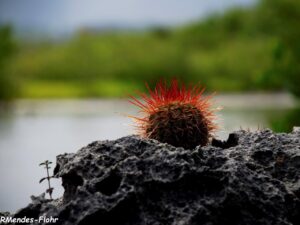 03-07-2024 ~ It starts at Schiphol, the Amsterdam airport. Before that, I am still immersed in my life in Jerusalem, busy with family matters and with grassroots activism against the Israeli occupation, while under pressure to finish grant proposals for the multicultural Jerusalem feminist center and art gallery where I work. I do not have time to connect emotionally to my trip, which still feels more like a yearly obligation to visit my elderly mother in Curaçao, when I would rather spend my precious vacation time trekking in Turkey or Nepal.
03-07-2024 ~ It starts at Schiphol, the Amsterdam airport. Before that, I am still immersed in my life in Jerusalem, busy with family matters and with grassroots activism against the Israeli occupation, while under pressure to finish grant proposals for the multicultural Jerusalem feminist center and art gallery where I work. I do not have time to connect emotionally to my trip, which still feels more like a yearly obligation to visit my elderly mother in Curaçao, when I would rather spend my precious vacation time trekking in Turkey or Nepal.
